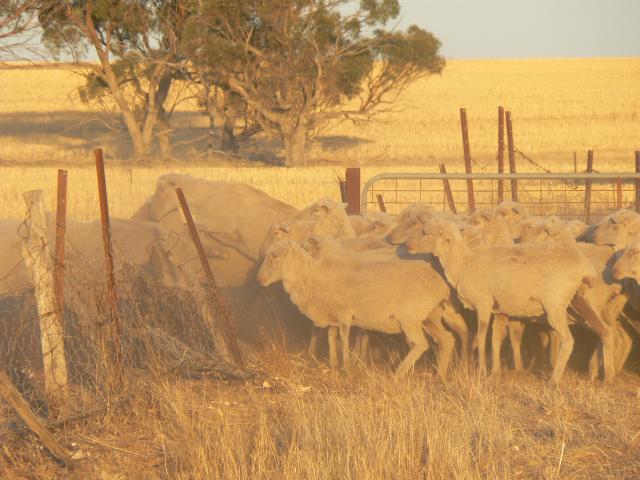Apply preventative measures or change management strategies
By avoiding or minimising high-risk activities, you will reduce the risk of introducing lice. To achieve lice eradication, you may need to change some management strategies.
Good fencing
Investment in fencing capable of stopping strays entering a property will greatly reduce the risk of a lice infestation. An area of internal isolation fencing would be valuable if a single mob within the farm flock becomes infested or is suspected of being infested. This will provide capacity to limit the infestation to one mob rather than expose the entire flock.
Stray and introduced sheep
The source of stock (for example, stray, purchased, agisted etc) will influence the preventative action that should be taken. To minimise the spread of lice, isolate infested mobs from the rest of the flock as soon as lice are found.
Lack of long protective period
At the time of publication (November 2016), the products most likely to achieve lice eradication do not have long protective periods and therefore will not protect a treated flock from an infestation after a lice incursion. Careful chemical selection is necessary as some older chemical groups have labelling suggesting that long protective periods are available and functional. For the older chemical groups, check whether chemical resistance has been reported before applying to your sheep.
Avoid split shearings
Where feasible, avoid split shearings and implement a single flock shearing and lice treatment. A single shearing avoids re-infestations occurring when untreated animals contact treated animals.
Monitor stock for signs of lice
If mobs were known to be lousy at the time of treatment, look for signs of rubbing after three months to check treatment effectiveness. Be aware that causes other than lice may lead to rubbing (for example grass seeds, itch mite etc) and that breeds such as Damaras and Dorpers may show signs of rubbing when the fleece is being shed.
Types of monitoring
There are two recommended types of monitoring — paddock and yard:
- Paddock inspections - carry out paddock inspections at regular intervals from six months after shearing for signs of rubbing and biting. Lice infestation may be indicated if sheep are increasingly rubbing and biting at wool. This should be followed by yard inspections.
- Yard inspections - inspect sheep when they are yarded for other procedures such as drenching or crutching. Inspect at least ten of the worst-affected sheep per mob by parting the wool in ten different places per side, which should take approximately half an hour per mob. Lice are about two millimetres long and light cream in colour with adults having dark body stripes. Lice are usually seen close to the skin and will move when exposed to bright light. Should an infestation be confirmed, isolation of the flock will limit spread. Use long wool treatments to control lice until shearing occurs. For short wool treatments following shearing, carefully research chemical options available and plan the timing of application to eradicate lice (see Lice chemical tables for short and long wool, sidebar).

